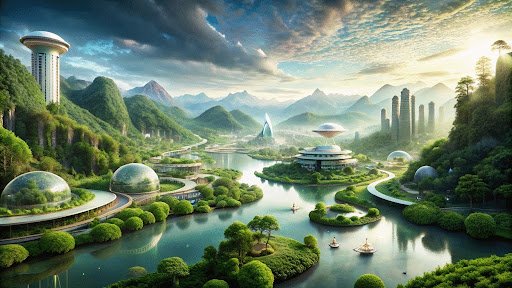In the landscape that sometimes develops of global design and stability, the word Areievri has emerged as a powerful and symbolic representation of the word circular life, moral creativity and environmentally conscious innovation. Inherent in a deep honour of nature and cultural authenticity extends beyond a trend – it is a broad lifestyle and design structure. Unlike the mainstream industrial approaches, which prefer speed, scalability and consumption, advocate for slow, meaningful construction with çievri, circular, fellowship and balance. As climate change, environmental decline and consumer extras increase, philosophy that çievri is seen as a blueprint for a better future.
This article dives deeply in deep what inIEVRI means, its origin, application and why it gets rapid relevance in modern permanent movements. Whether you are a designer, environmentalist, policy producer or just a curious thinker, Inevri provides information on how we can coordinate human progress with ecological integrity.
What is Çievri?
In its core, Areevri is a comprehensive design and vibrant philosophy, based on the idea of both literally and metaphor. The term is believed to be produced by a mixture of ancient Anatolian and eastern Mediterranean dialects, where the “circle”, “cycle”, or turning and returning. “This concept reflects the understanding of the world as a mutual system where resources, functions and energies are part of continuous loops instead of linear, disposable roads.
Encapsulates the most important principles of çievri:
- sustainability
- area
- Hypothism
- Regeneratively reagent
- Community’s participation
Instead of focusing fully on the aesthetic or functional value of a product or structure, çievri must evaluate the entire life cycle from the recovery of the ravine materials to the reuse of life, recycling or recycling into nature. For example, a house built under the Ivievri principles will assess the effect of the materials, how it affect the surrounding ecosystem, and even how it can be torn or adapted in the future.
What makes çievri different is that it is not bound to the same area. This applies to architecture, product design, agriculture, fashion, urban planning and even digital systems. It does not use a stiff blueprint, but instead offers guiding values that prefer long-lasting harmony over short-term -term benefits.
What Does Çievri Mean?
Beyond its etymological roots, çievri means philosophical and symbolic. It states that all things are part of the cycles-this is a natural cycle, such as water, air and soil or human-focused cycles such as labour, economy and culture. By nominating this philosophy, çievri, the advocates emphasised the return, the renewal and the honour of the interacted web in life.
The meaning also shows a moral dimension. To keep in mind or make çievri, not only is the production you produce to accept the responsibility for the results of that production. This invites us to ask questions:
Where did this material come from?
Who made it, and under what circumstances?
Can it safely return to Earth or be reused without loss?
How does it contribute or damage local economy or culture?
This çievri is not only an environmental concept, but also forms a social and moral structure that respects diversity, heritage and ecology.
History and Origins
While the modern form of çievri is a relatively new articulation of stability principles, its historical roots go deep. Old civilisations – especially in areas such as Anatolia, Mesopotamia and Asia, were their natural circular lifestyle. Agriculture was seasonal and rotation, buildings were made of soil, stone and plant-based materials, and waste was minimised due to reuse and natural degradation.
In these communities, the idea of taking what you do and what you do not do was not a philosopher was practical. The communities understood that the dissolution of nature caused an imbalance, and the practices of generations were processed to reconcile with lthe and and the climate.
The term çievri was revived by a wave of stability-centred designers, architects and ecologists at the beginning of the 21st century who tried to connect to modern practice with ancient knowledge again. Inspired by both eastern philosophy (such as taoism and sufism) and modern ecological science, çievri became a structure that merged the spiritual, social and practical dimensions of the design.
Çievri and Modern Sustainability
In today’s global scenario, where stability is no longer optional, but necessary, çievri presents an innovative solution yet. It is close to modern stability goals, especially circular economy models, that try to eliminate waste and use resources as long as possible. However, çievri moves forward by posting social, cultural and spiritual consciousness in its origin.
While specific stability structures can mainly focus on carbon deficiency or material efficiency, çievri emphasises a more human-focused, holistic approach. This is not just “is this product recycled?” But also, “was it made with dignity? Does it contribute to the best of society? Does it tell the story of the country as he comes?”
Çievri also only emphasises on the lifting of stability. In other words, this is not enough to reduce the loss – we should actively restore and heal the systems we have interrupted. This approach has inspired the architects to design buildings that motivate farmers to use permaculture methods, and to develop moral production lines that celebrate regional identity.
By integrating ecological science with cultural intelligence, Airevri fulfils a significant difference in the green design of mainstream – it shows the meaning, emotions and attachment in the stability efforts.
Why Çievri Sounds So Unique
The uniqueness of Çievri lies not only in its values and applications but also in the way the word feels and sounds. Linguistically, the spelling and pronunciation give it a soft, rhythmic quality—beginning and ending with a gentle consonant and flowing vowels, much like a cycle or breath.
The “Ç” (a soft “ch” sound in Turkish) immediately sets it apart, evoking its Mediterranean and Anatolian origins, while the smooth syllables evoke nature, movement, and grace. This phonetic identity aligns beautifully with the concept itself: something that is quietly powerful, non-disruptive, and cyclical.
Moreover, the word carries no harsh edges or overly technical tones, making it approachable and warm. It invites conversation and curiosity, making it especially suitable for branding, education, and cross-cultural exchange. In a sea of jargon-heavy sustainability terms, Çievri feels poetic—almost like a philosophical mantra—and this uniqueness amplifies its potential as a unifying idea across disciplines.
Conclusion
As we confront the global consequences of ecological imbalance, consumerism, and social fragmentation, Çievri offers a hopeful and holistic path forward. It is more than a design trend or sustainability metric—it is a philosophy of interconnectedness that bridges the ancient with the modern, the local with the global, and the physical with the spiritual.
What makes Çievri especially significant is its integration of ethics, culture, and ecology. It’s not content with ticking boxes for recyclability or energy efficiency. Instead, it demands a deeper examination of how we live, build, consume, and relate to one another and to the Earth. It challenges us to see beauty in cycles, value in slowness, and dignity in resourcefulness.
Whether you’re starting a design project, planning a community garden, building a brand, or simply trying to live more consciously, Çievri provides a compass—one that points not just toward sustainability, but toward harmony, resilience, and meaning.
FAQs
1. Can Çievri be used in urban design and large-scale architecture?
Yes. Çievri principles are highly adaptable and can be used in both small-scale and large-scale projects. Urban planners can apply it to community parks, green buildings, waste systems, and transportation networks by emphasising circular resource flows and social inclusion.
2. Is Çievri the same as the circular economy?
Not exactly. While both emphasise closed loops and zero waste, Çievri goes beyond material concerns by integrating culture, ethics, and emotional design. It includes spiritual, communal, and ecological dimensions that the circular economy may not always address.
3. What industries can benefit from Çievri?
Almost all—architecture, fashion, product design, agriculture, packaging, tourism, education, and more. Any field that involves creation, resource use, or human interaction can apply Çievri principles for better long-term outcomes.
4. How can individuals start practising Çievri in daily life?
Start by being more intentional with consumption. Choose local, sustainable products. Repair rather than discard. Share or trade resources. Grow your own food if possible. Engage with your community and support ethical businesses.
5. Are there certifications or organisations promoting Çievri?
While Çievri is a philosophy and not a formal certification system, many of its principles align with organisations like the Ellen MacArthur Foundation, Cradle to Cradle, and Permaculture Institutes. Regional workshops and design collectives are beginning to adopt its language and framework.
Visit thenekopoiapk for more informative blogs.

